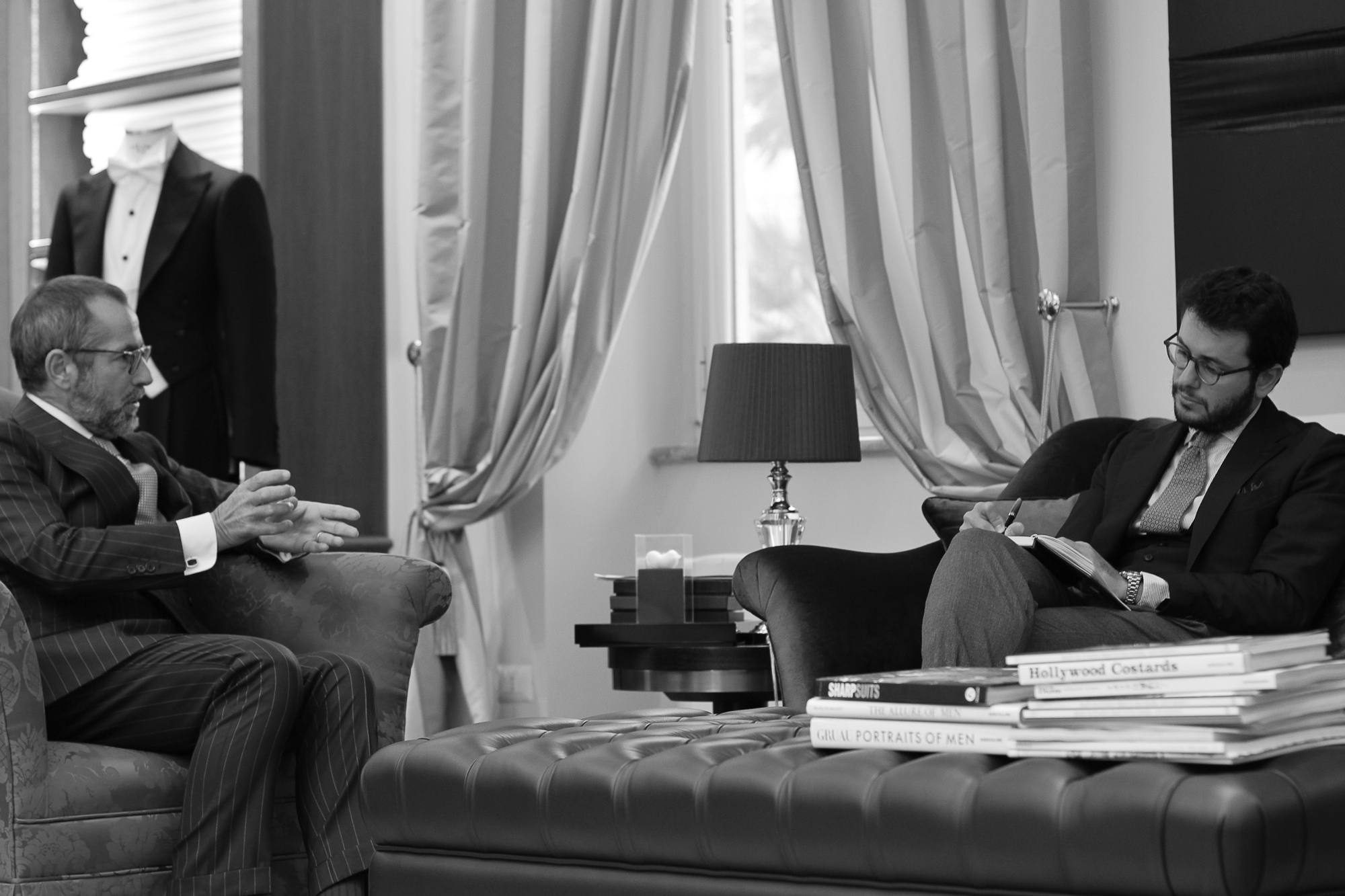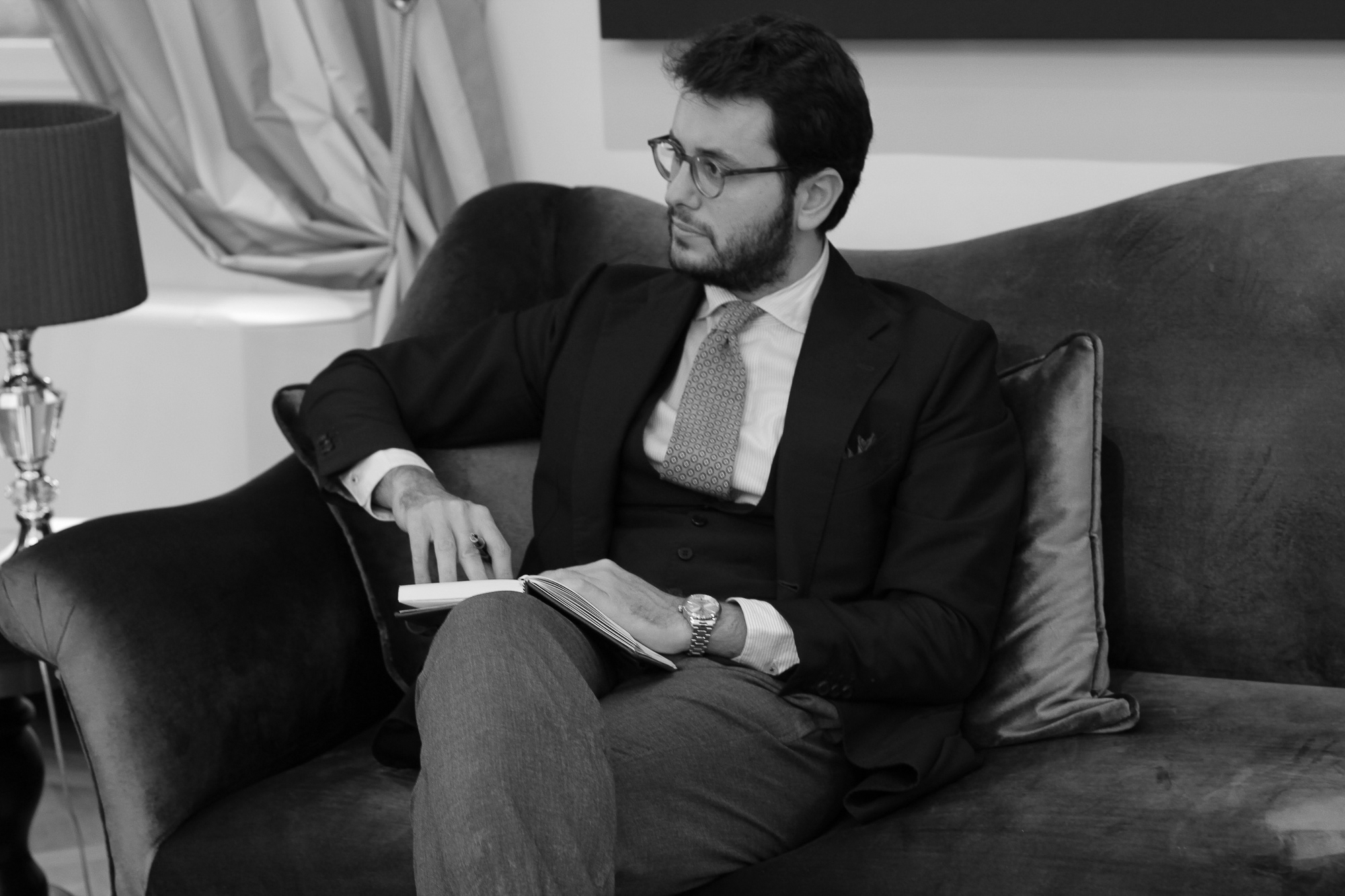In my ongoing hunt to try to determine the defining traits of the Roman jacket – if indeed they exist – how could I not pay a visit to the Gaetano Aloisio atelier? The atelier is spread out over three floors in an elegant palazzo in Via di Porta Pinciana 1 in Rome. Of Calabrian origin, the master tailor came to the capital in 1991 after having practiced his art in Milan and recently he also opened a showroom in Paris. One thing is certain: it is no mean feat to categorise Aloisio’s jackets within the realm of Italian tailoring. The suits are lightweight, there’s no doubt about it, but they have a somewhat unkempt shape, unpronounced but slightly stiff shoulders, with padding both at the front and at the back, zealously precise stitching on the lapels which leave no space for the much exalted charm of imperfection, typical of Neapolitan tailoring. He welcomes me attired in a flawless pinstripe double-breasted suit, a Blazon by Drapers, and I can’t help but notice a plumb that is sheer perfection, with the corner of the peak at exactly the same height as the stitching between the neck and the collar.
“It is my clients who demand such precision,” explains Aloisio, who admits that the majority of his clients are demanding foreigners, mainly from Russia. The armhole is, broadly speaking, open on the classic suit and shirt-style on the casual blazer. The shoulders are neither shorter nor longer than the measurements of the client, as they have to “accompany the line of the body”, as he points out. Only the underside of the collars are sewn using a Strobel machine, while the lapels are hand-stitched to plump them out more. He does not use pre-cut canvas, favouring individually preparing each one by hand. The end result is a “clean” bottom to the jacket, with no long darts, bringing the side dart to the hemline only when the clients have a pronounced belly or are broad-chested. More than 25 workers produce the items in-house, and very soon he will open a shirt-making laboratory on the ground floor of the building which he owns. It is interesting to note how he works the front of his items to accommodate the shoulder: in contrast to the majority of tailors that I have visited, Aloisio does not make the “squarciata" shoulder – which consists of making dents in the various layers of the interweave so as to plump up the frontal quarter at the level of the armhole – but he works the interweave and the haircloth cut on the bias to obtain the same effect. Why? “I mainly work with extremely fine fabrics, from Super 180s upwards, so if I were to adopt the ‘squarciata’ method, the dents would be visible under the cloth to the naked eye,” he reasons. Such meticulousness and such a globally-reaching marketplace has its cost though: indeed, a suit has a starting price of €4,500.
Bespoke hugs,
Fabio




.jpg)

.jpg)
.jpg)
.jpg)



